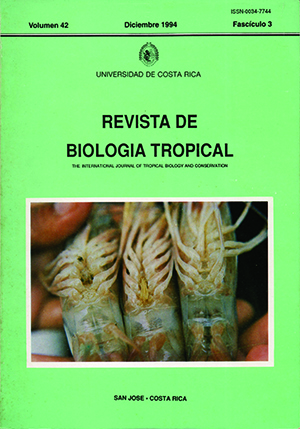Abstract
To determine the tick spécies hinderlng the cattle indusiry in Costa Rica and to assess infection rates of ticks with three important hemoparasite species; cattle were monitored durltig a period of six months (October 1992 - March 1993). Four farros were located in the dry pacific region of the canton of Tilarán and a fifth farro on the slopes of the Poás volcano in a cool tropical cloud-forest .ecosystem. On each farro 3 to 5 animals of 6 to 24 months of age were selected at random. All ticks were removed on a monthly basis from the rlght half side of each animal, while the site of attachment was recorded. Ticks were counted and differentiated according to species, developmental stage and sexo Moreover; engorged female ticks were assayed for the presence of Babesia bigémina. Babesia bovis and Anaplasma margiriale using the polymerase chain reáction (PCR) multiplex system. Two species of ticks, Amblyomma cajennense and Boophilus microplus. were encountered on thecattle in the Tilarán region and one species, B. micro plus, was detected in the Poás regioll. Two to ten times as many ticks were encountered in the Tilarán region than in the Poás region, which is in accordance \vith a stable enzootic protozoan disease situation in the former region and .an unstable epizootic situation in the latter region. Nymphal an d adult stages of both tick species were present in largest numbers' on the ventral parts 'of the animals. PeR atialysis of entire ticks indicated very high infection rates with hemoparasites of veterinary importance. This \vas in accordance·with high seroprevalence rates in the hosts.##plugins.facebook.comentarios##

This work is licensed under a Creative Commons Attribution 4.0 International License.
Copyright (c) 1994 Revista de Biología Tropical
Downloads
Download data is not yet available.


